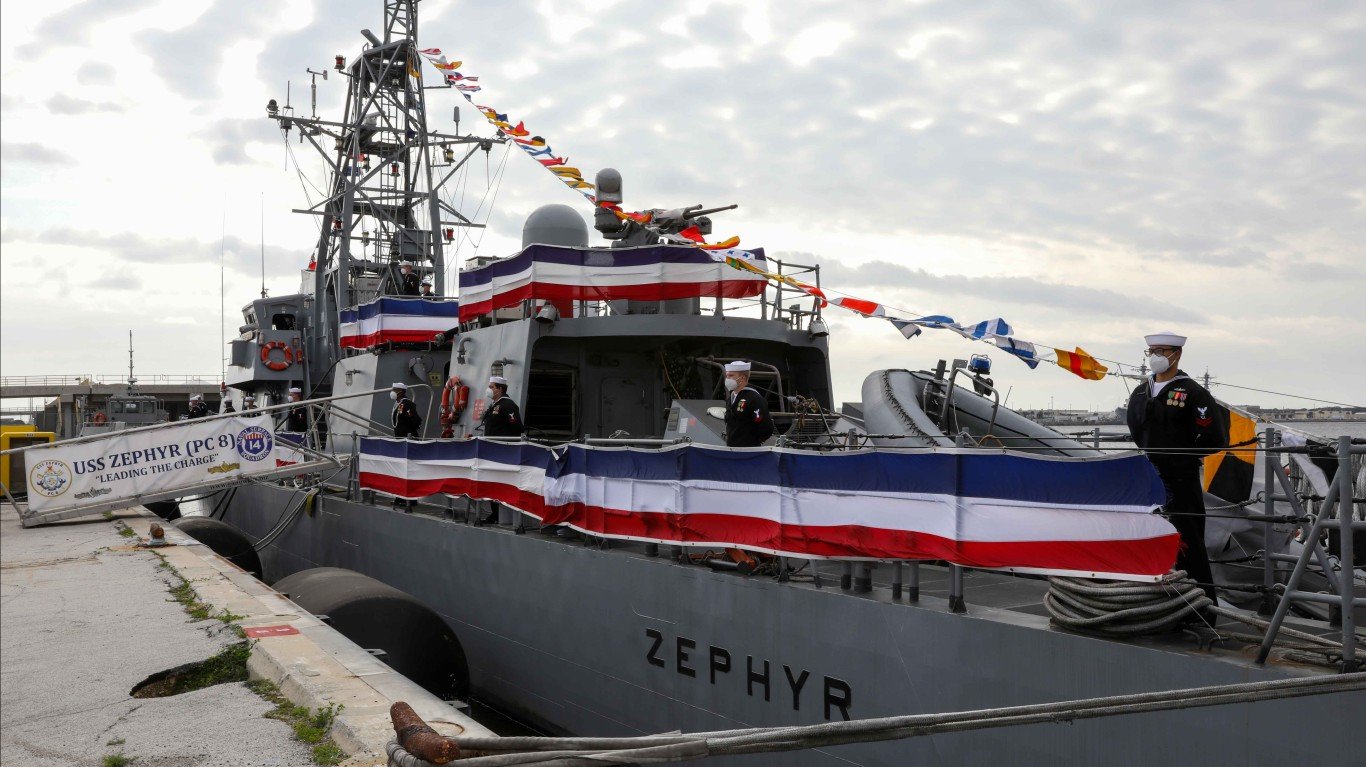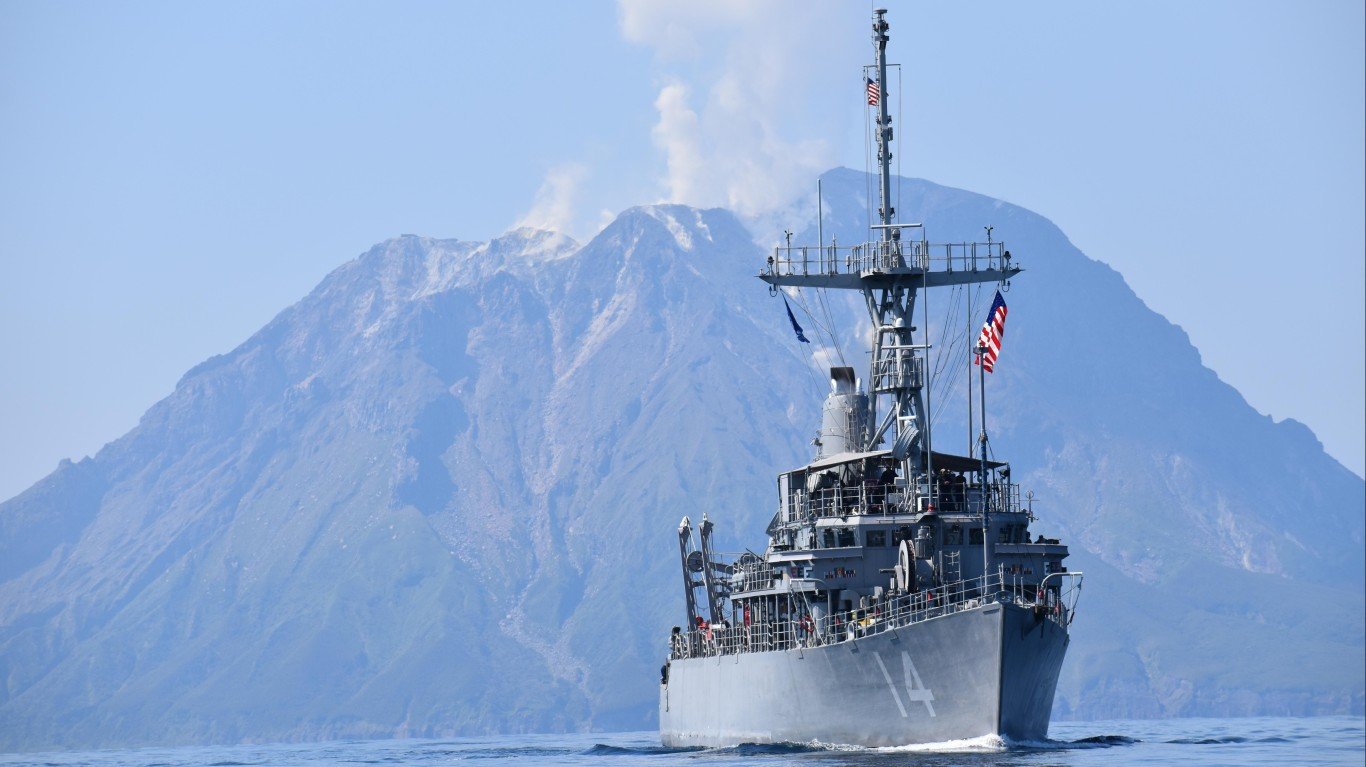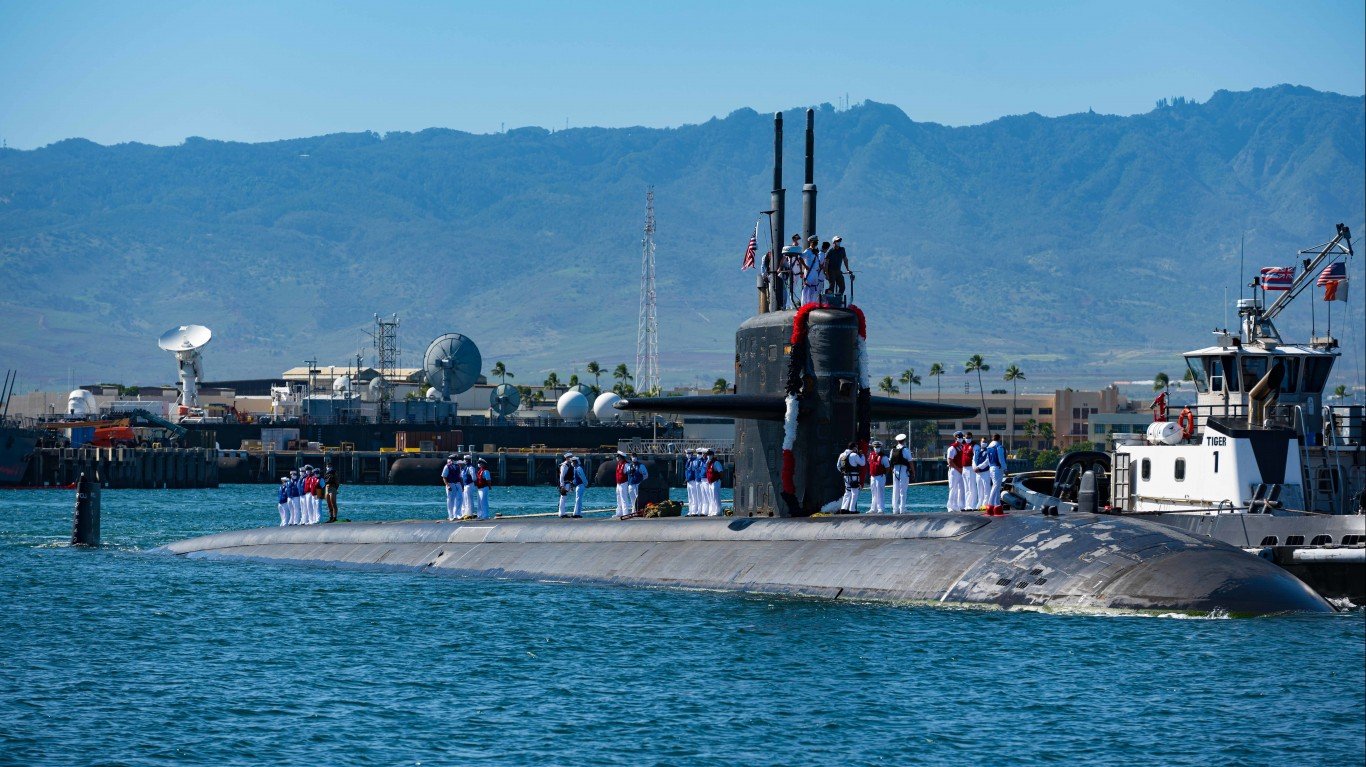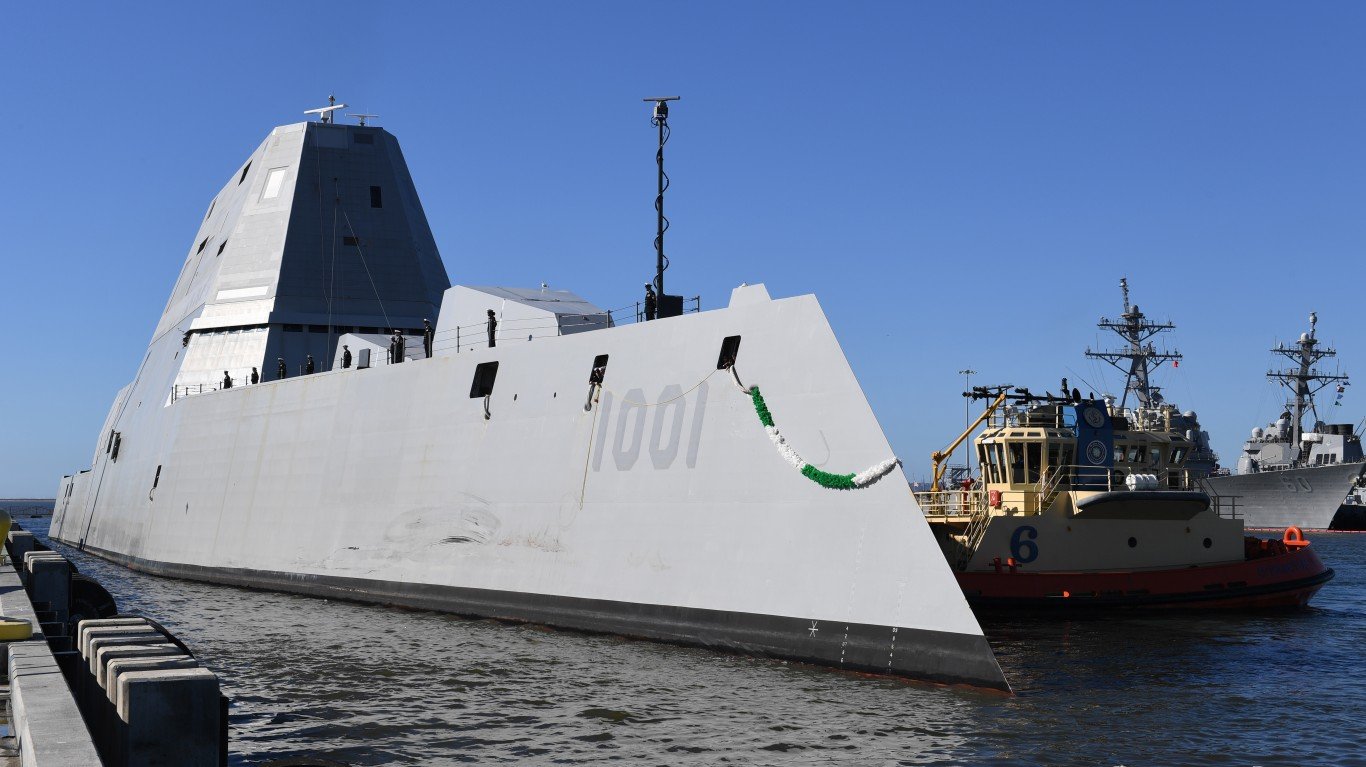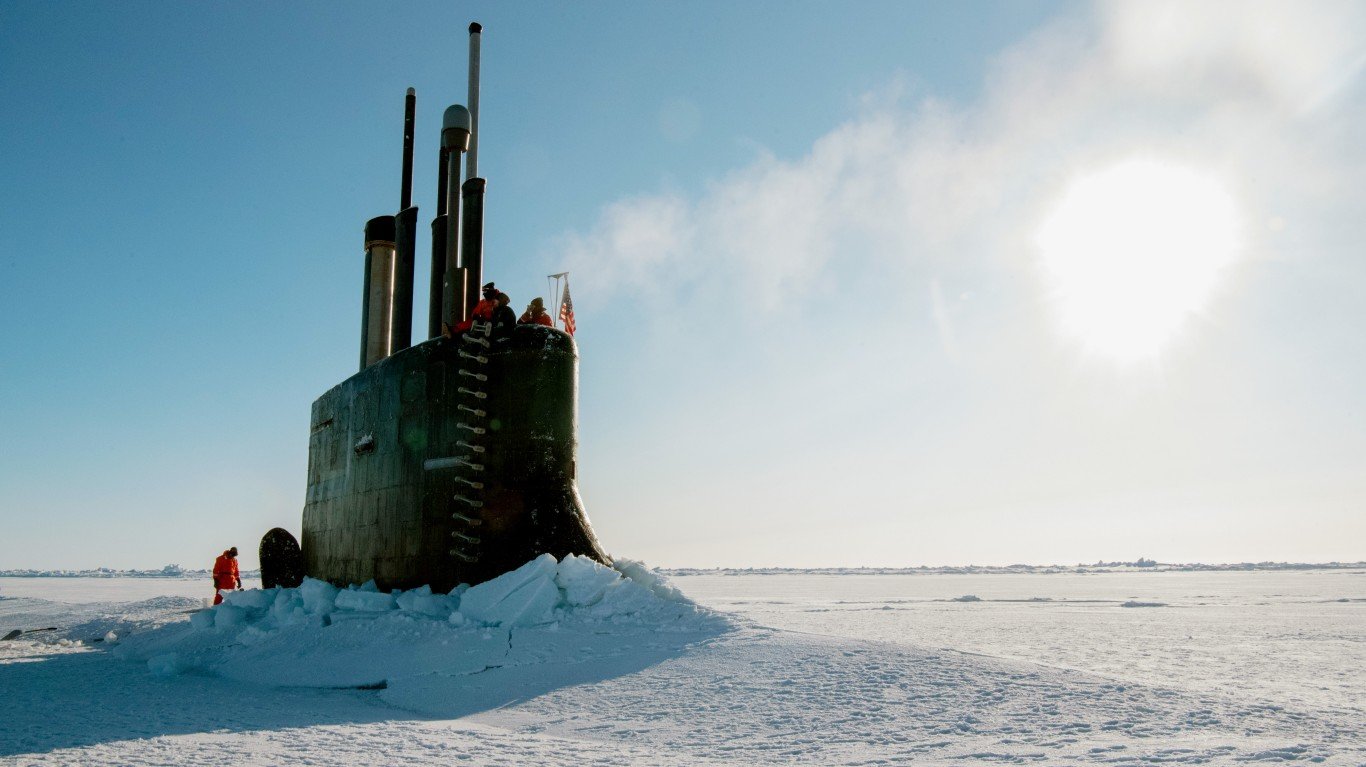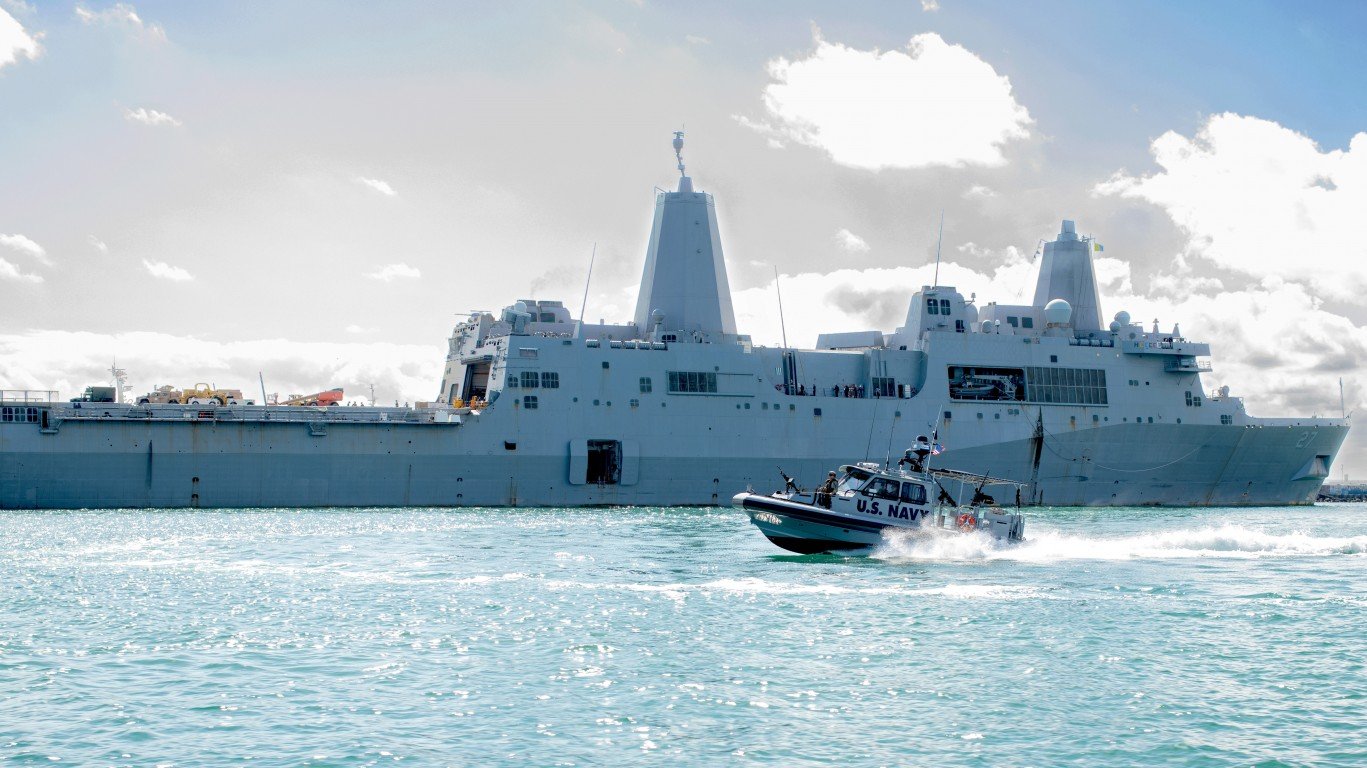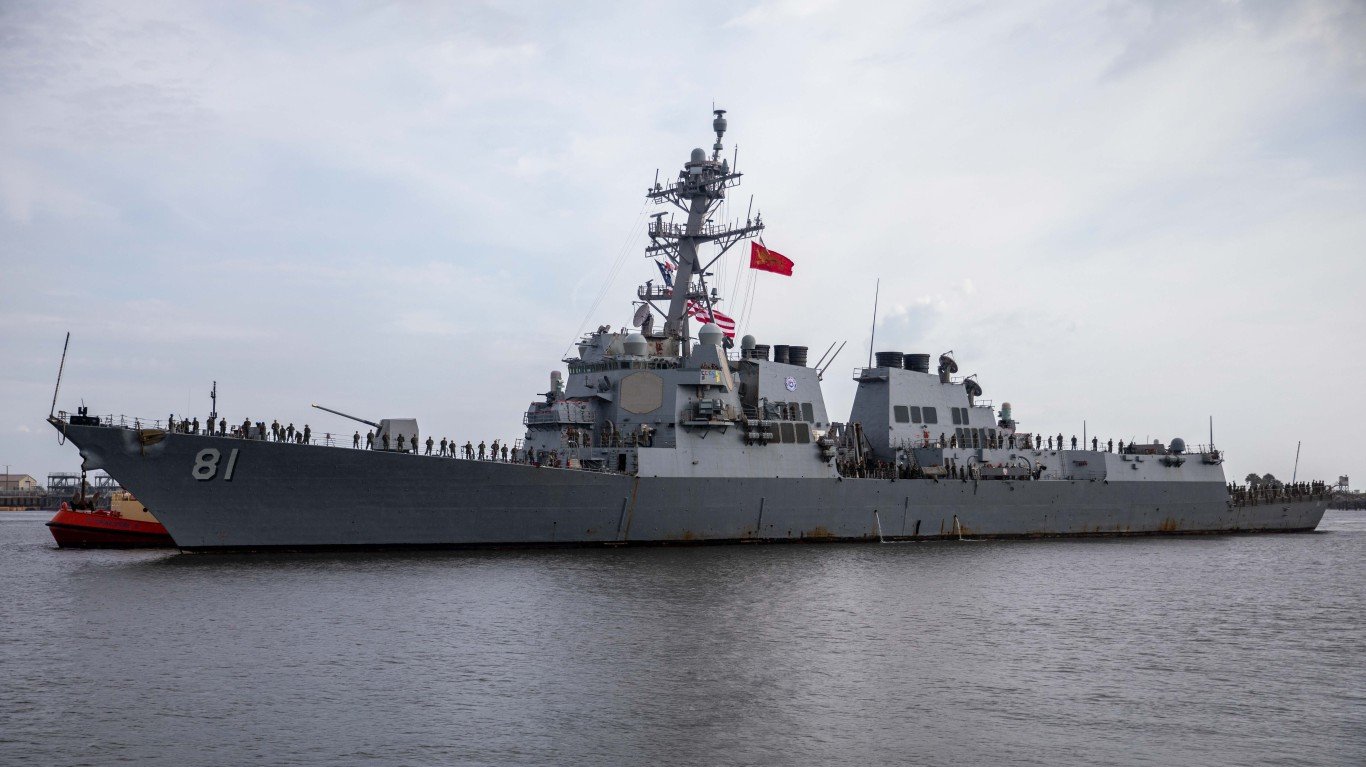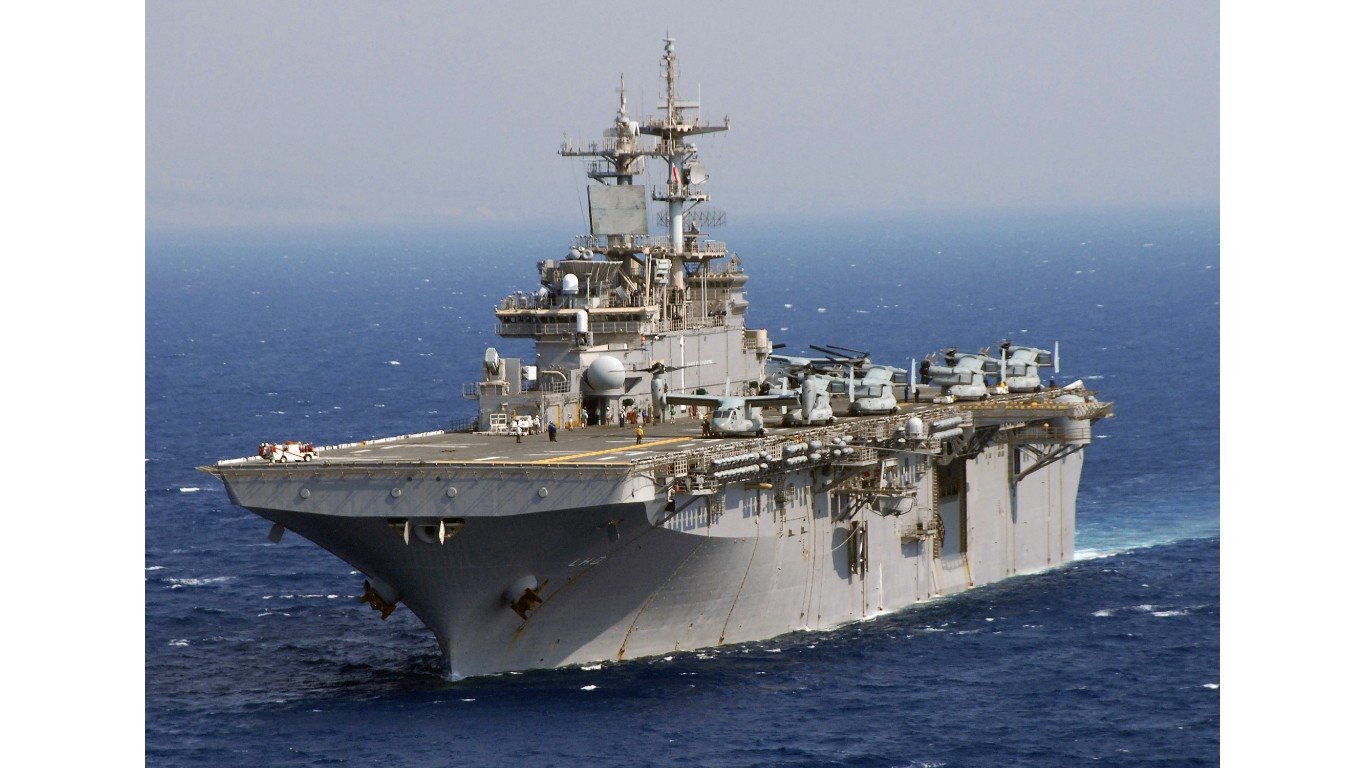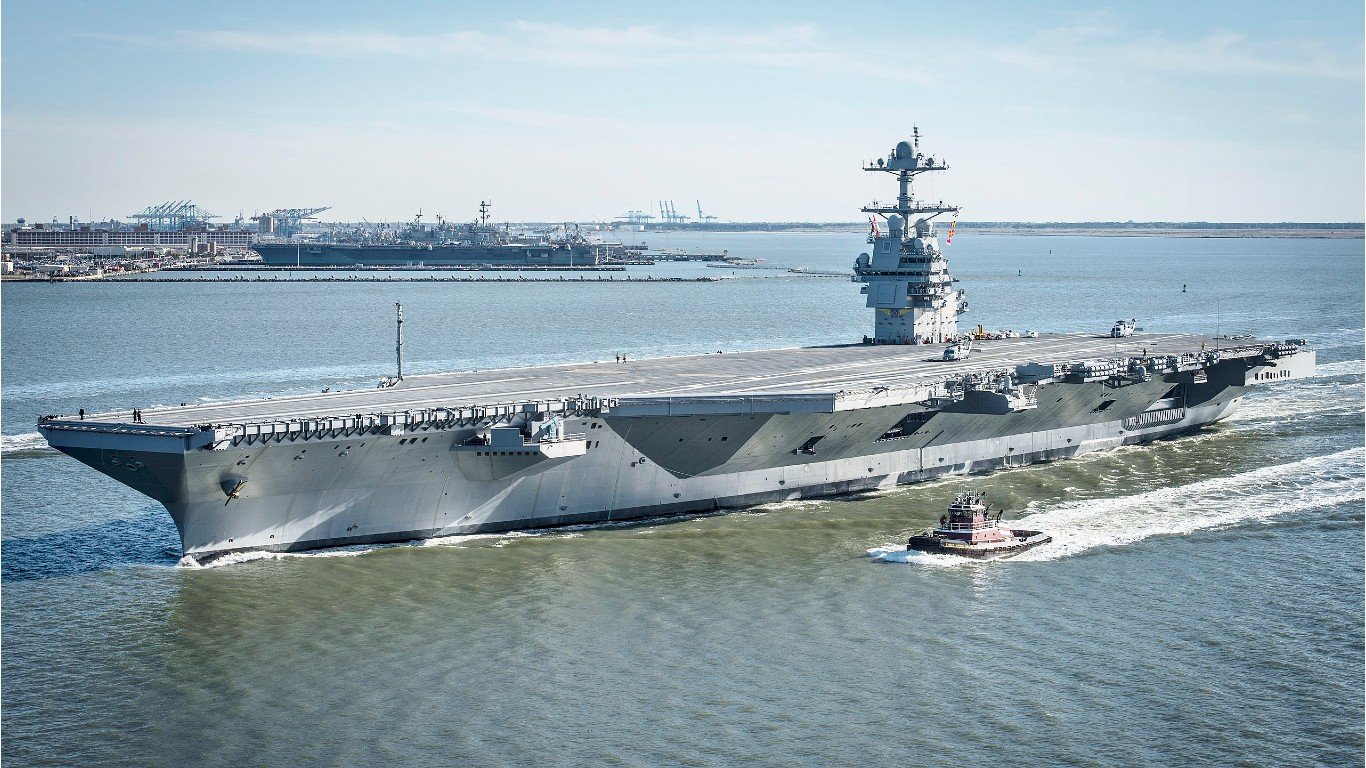

The U.S. Navy fleet currently includes 243 surface and underwater vessels in 19 different classes, including various aircraft carriers, assault ships, transport docks, submarines, and more. Each of these classes of vessels serves a combat, surveillance, or transport purpose and has a specific crew capacity, from the small Cyclone-class patrol ships, which can hold 30 crewmembers, to aircraft carriers that have a crew complement of around 5,000 people. (These are the world’s fastest warships.)
To determine the vessels with the largest crews in the U.S. military, 24/7 Wall St. reviewed a list of active U.S. military naval vessel classes from Military Factory, an online database of military vehicles, aircraft, naval vessels, and more. We also used other sources with naval vessel lists, including Military-Today, and ranked the vessel classes by the crew that is required to effectively operate each vessel. Data on total displacement and the year each vessel entered service also came from Military Factory. Supplemental information on how many vessels are in service in each class came from the World Directory of Modern Military Warship.
The U.S. Navy boat classes with the largest crews are both aircraft carriers. The Nimitz-class nuclear-powered supercarrier can hold up to 5,680 people and is one of the largest warships in the world. Ten Nimitz carriers are in service. The Nimitz, however, is currently being replaced by the newer Ford-class aircraft carrier, which is designed for a crew of 4,660 and boasts heightened battle capabilities and lower maintenance costs. Just one Ford carrier is in service so far. These are the U.S. Navy’s newest ships and submarines.
With crews of over 2,700, the America-class and Wasp-class amphibious assault ships are also among the largest in terms of personnel. These resemble small aircraft carriers that allow for vertical and short takeoff and landing of helicopters. They also have a well deck for the use of landing craft.
Click here to see the largest crews on US Navy ships and submarines.
19. Cyclone-class patrol ship
> Crew: 30
> Total displacement: 335 tons
> Number in US fleet: 10
> Year entered service: 1983
[in-text-ad]
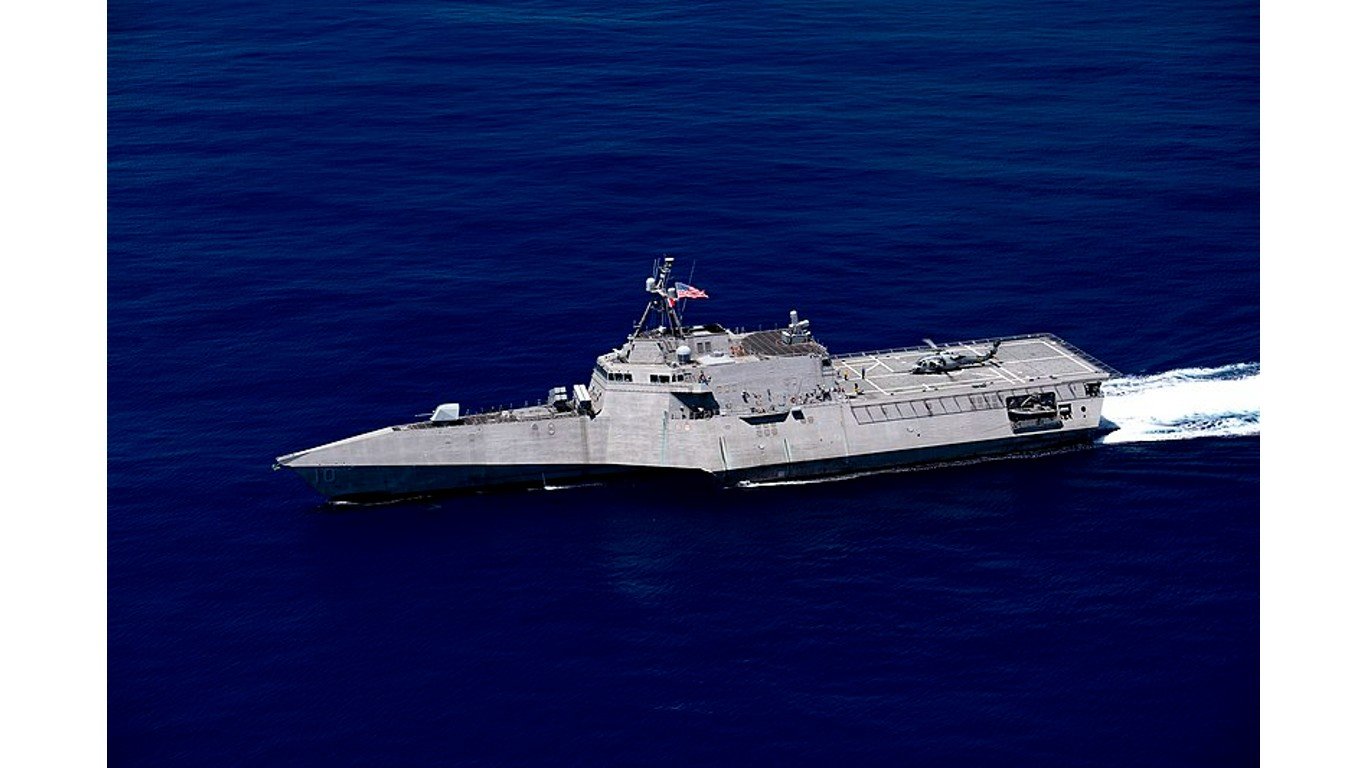
18. Independence-class corvette
> Crew: 75
> Total displacement: 3,300 tons
> Number in US fleet: 12
> Year entered service: 1976
17. Avenger-class mine countermeasures ship
> Crew: 81
> Total displacement: 1,367 tons
> Number in US fleet: 8
> Year entered service: 2017
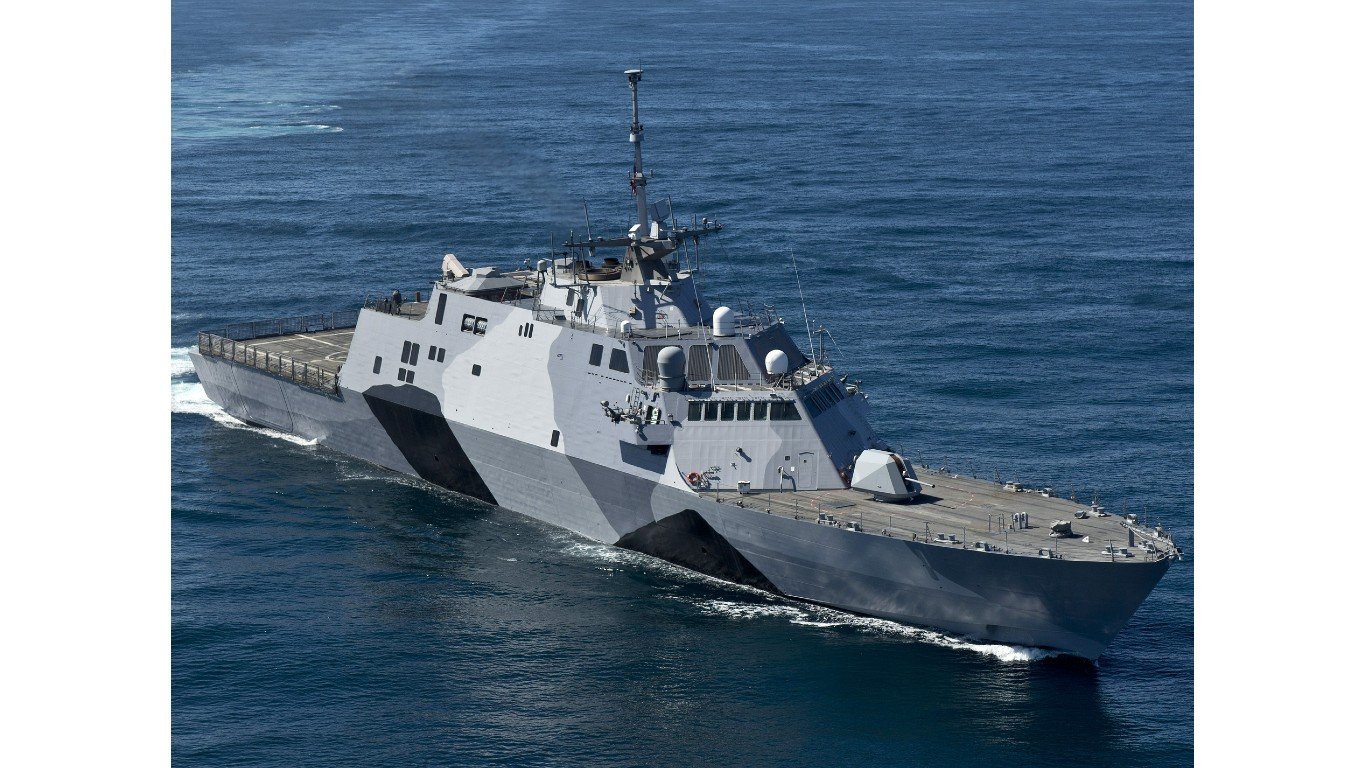
16. Freedom-class littoral combat ship
> Crew: 125
> Total displacement: 3,000 tons
> Number in US fleet: 9
> Year entered service: 1991
[in-text-ad-2]
15. Los Angeles-class submarine
> Crew: 134
> Total displacement: 7,800 tons
> Number in US fleet: 28
> Year entered service: 2006
14. Virginia-class submarine
> Crew: 135
> Total displacement: Surface: 7,800 tons, Submerged: 8,700 tons
> Number in US fleet: 19
> Year entered service: 1987
[in-text-ad]
13. Zumwalt-class guided missile destroyer
> Crew: 140
> Total displacement: 14,500 tons
> Number in US fleet: 2
> Year entered service: 1993
12. Seawolf-class submarine
> Crew: 141
> Total displacement: Surface: 8,600 tons, Submerged: 9,140 tons
> Number in US fleet: 3
> Year entered service: 2004
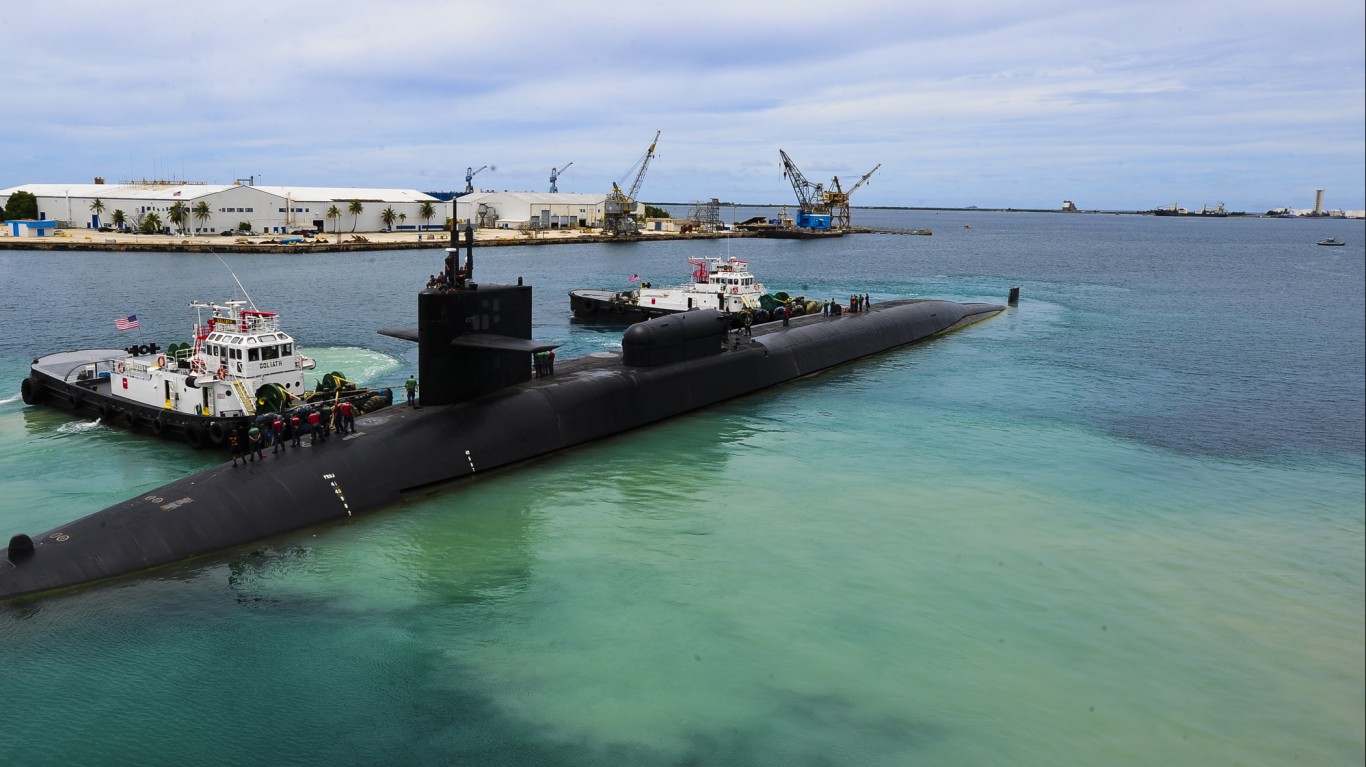
11. Ohio-class submarine
> Crew: 153
> Total displacement: Surface: 16,765 tons, Submerged: 18,750
> Number in US fleet: 18
> Year entered service: 1985
[in-text-ad-2]

10. Ticonderoga-class cruiser
> Crew: 330
> Total displacement: 9,600 tons
> Number in US fleet: 22
> Year entered service: 1983
9. San Antonio-class amphibious transport dock
> Crew: 361
> Total displacement: 25,000 tons
> Number in US fleet: 11
> Year entered service: 2016
[in-text-ad]
8. Arleigh Burke-class guided missile destroyer
> Crew: 380
> Total displacement: 9,215 tons
> Number in US fleet: 68
> Year entered service: 2010

7. Whidbey Island-class dock landing ship
> Crew: 413
> Total displacement: 16,740 tons
> Number in US fleet: 7
> Year entered service: 1970
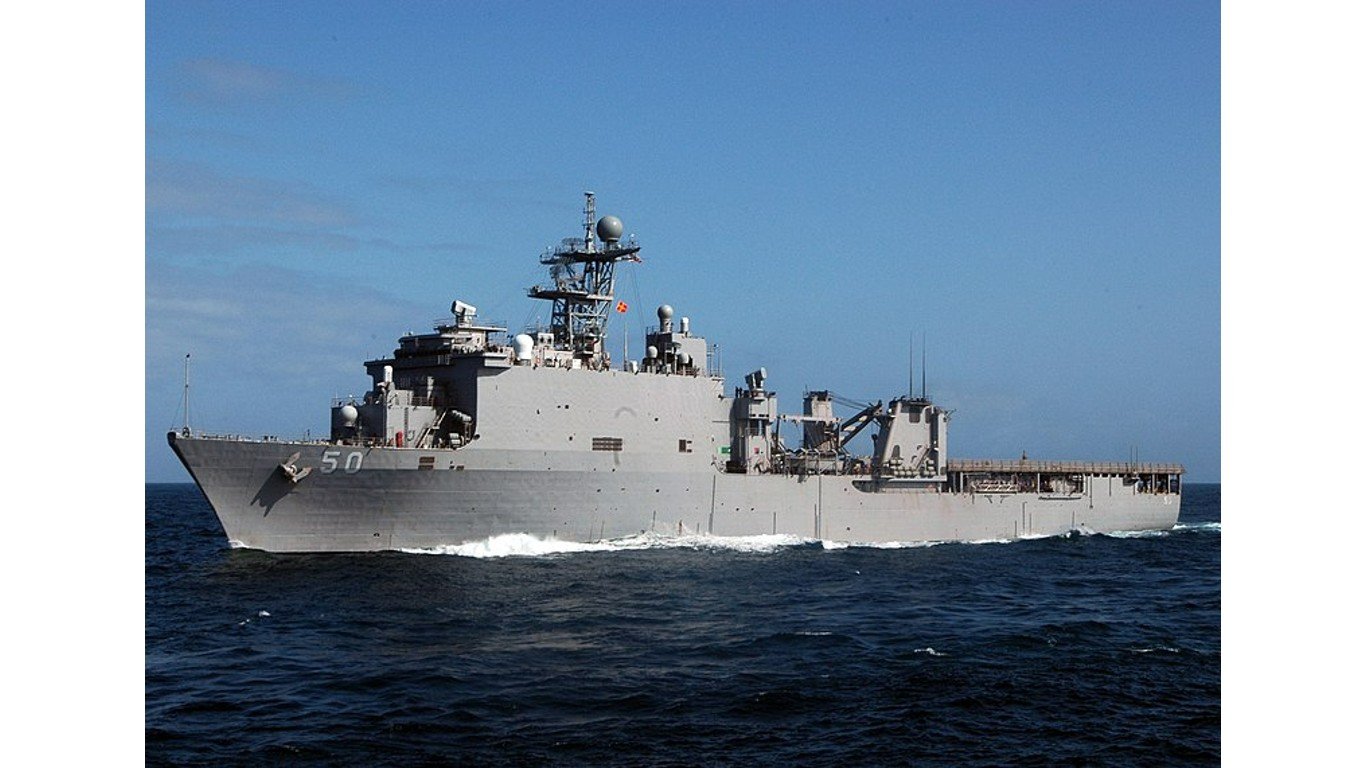
6. Harpers Ferry-class dock landing ship
> Crew: 825
> Total displacement: 19,600 tons
> Number in US fleet: 4
> Year entered service: 1989
[in-text-ad-2]
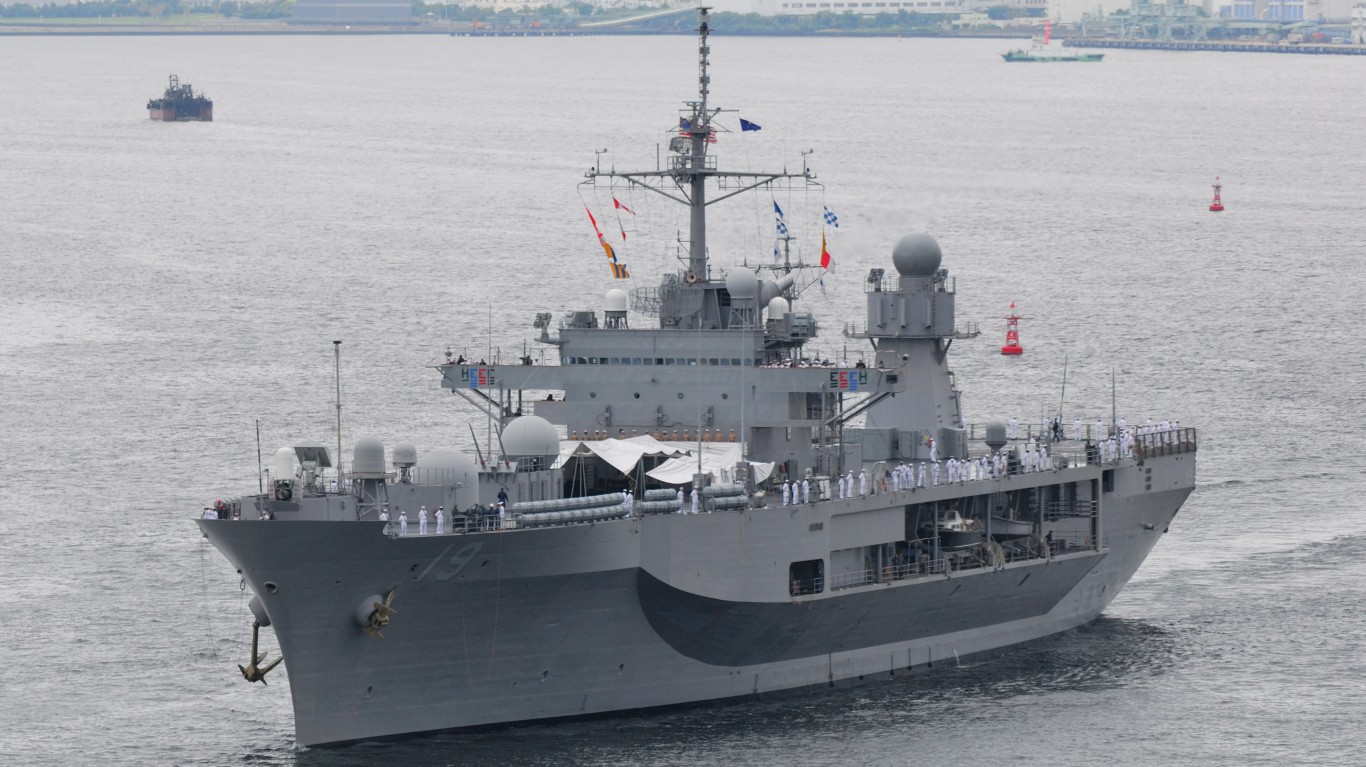
5. Blue Ridge-class command ship
> Crew: 842
> Total displacement: 18,875 tons
> Number in US fleet: 2
> Year entered service: 1997

4. America-class amphibious assault ship
> Crew: 2,745
> Total displacement: 46,000 tons
> Number in US fleet: 2
> Year entered service: 2014
[in-text-ad]
3. Wasp-class amphibious assault ship
> Crew: 2,979
> Total displacement: 41,182 tons
> Number in US fleet: 7
> Year entered service: 1995
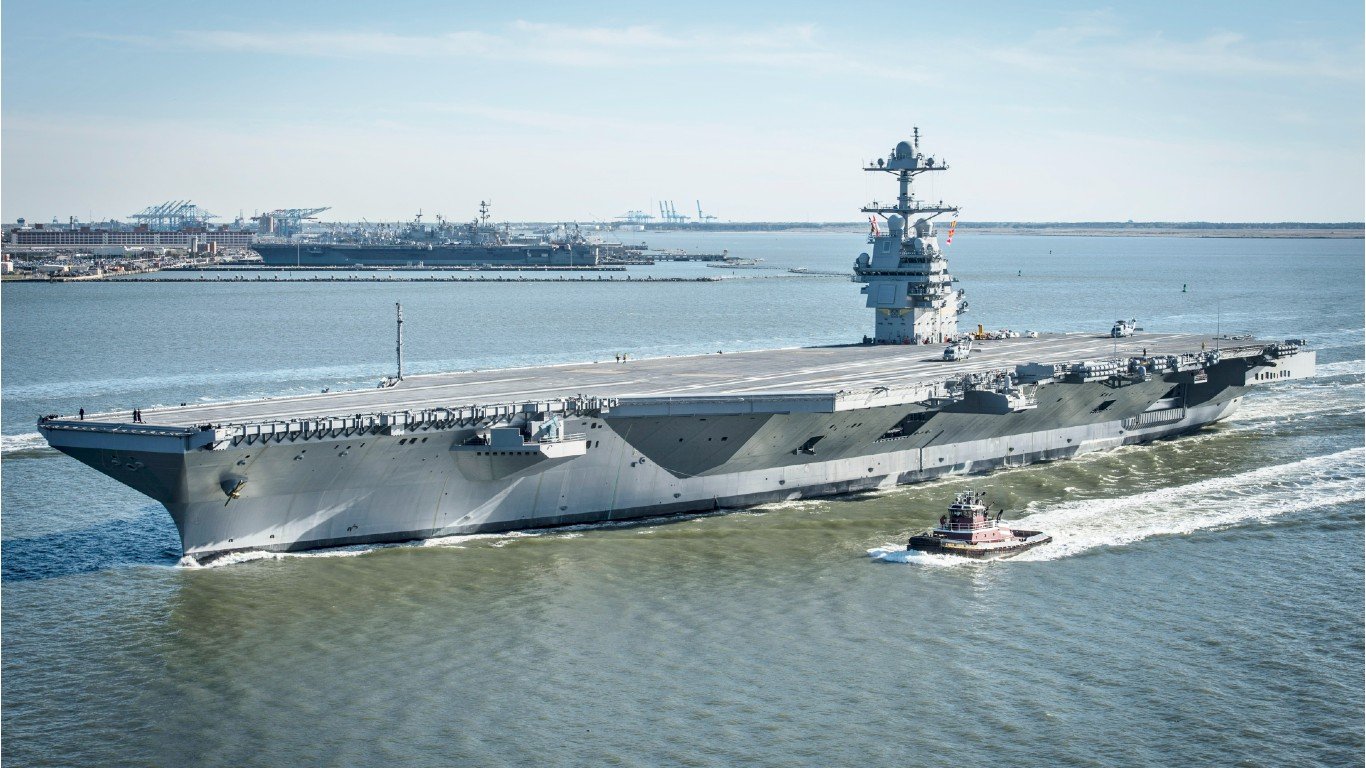
2. Ford-class aircraft carrier
> Crew: 4,660
> Total displacement: 112,000 tons
> Number in US fleet: 1
> Year entered service: 2008
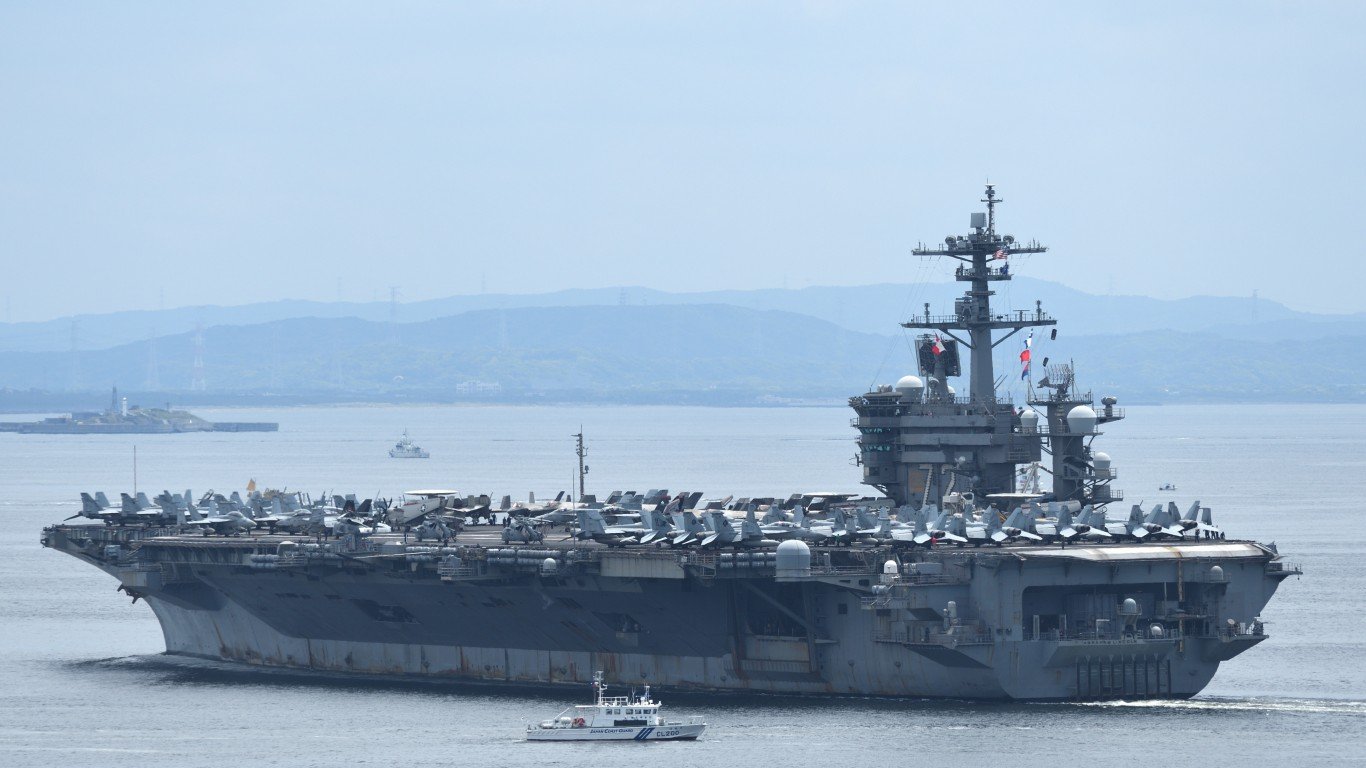
1. Nimitz-class aircraft carrier
> Crew: 5,680
> Total displacement: 114,000 tons
> Number in US fleet: 10
> Year entered service: 1975
Essential Tips for Investing: Sponsored
A financial advisor can help you understand the advantages and disadvantages of investment properties. Finding a qualified financial advisor doesn’t have to be hard. SmartAsset’s free tool matches you with up to three financial advisors who serve your area, and you can interview your advisor matches at no cost to decide which one is right for you. If you’re ready to find an advisor who can help you achieve your financial goals, get started now.
Investing in real estate can diversify your portfolio. But expanding your horizons may add additional costs. If you’re an investor looking to minimize expenses, consider checking out online brokerages. They often offer low investment fees, helping you maximize your profit.
Thank you for reading! Have some feedback for us?
Contact the 24/7 Wall St. editorial team.
